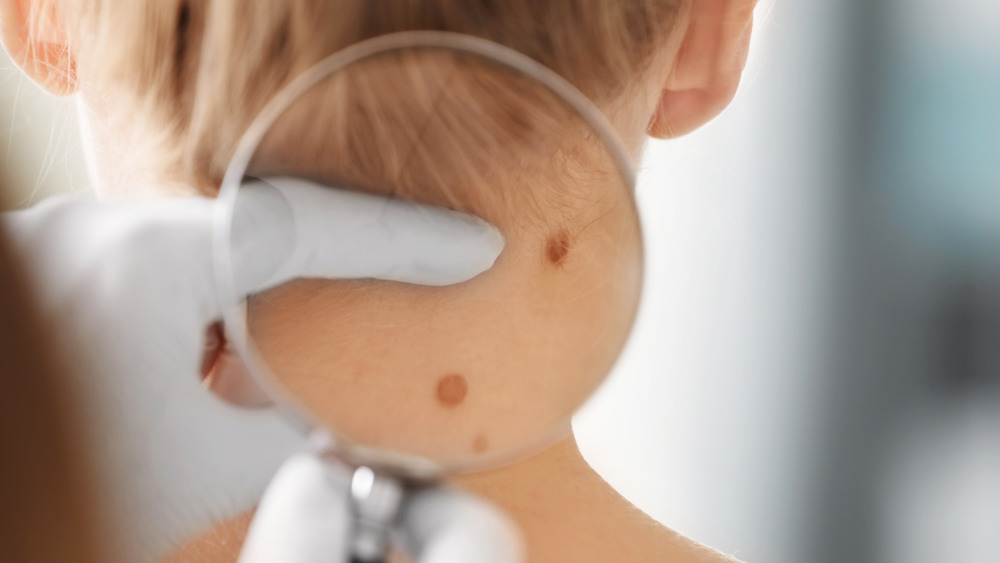Here's Where Your Birthmark Really Comes From
Birthmarks come in all shapes and sizes. Some may be the size of a pinhead while others can sprawl out over a large swath of skin (via the American Academy of Dermatology). They may look like a bruise or appear to be a stain on the skin. Their appearance can be pink, tan, red, brown, or many other colors. Birthmarks are common and the vast majority are harmless, sometimes even fading or disappearing over time. But where do they come from?
That answer isn't so simple. What causes birthmarks to form isn't completely known, but doctors have a general understanding of why they may appear (via Healthline). Vascular birthmarks, which are typically red or pink in color, form when blood vessels beneath the skin do not develop properly. Pigmented birthmarks, which are typically tan, brown, gray, black, or even blue, form when pigment cells cluster, causing color change in the skin (via MedlinePlus). While most birthmarks aren't hereditary, some are associated with rare genetic conditions, including neurofibromatosis type 1 (NF1), Sturge-Weber syndrome, and Klippel-Trenaunay syndrome.
When birthmarks are a cause for concern
Birthmarks are common, with more than 10 percent of babies having a birthmark of some kind, according to NYU Langone Health. Most birthmarks are harmless and may go away on their own. However, certain birthmarks, such as brown or black moles, may develop into melanoma, the most serious type of skin cancer (via United Kingdom National Health Service). The risk of cancer increases with the size of the mole. This type of birthmark should be checked by a dermatologist and monitored at home for changes in size, shape, color, and elevation. Birthmarks that hurt, bleed, itch, or become infected also warrant a trip to the doctor.
While most birthmarks aren't a cause for concern, some may affect self-esteem, especially if they're in highly visible areas of the body. In these instances, there may be some options to remove or reduce the appearance of birthmarks. These include topical medications, laser therapy, and surgery. Talk to your doctor if you're interested in one of these methods.


